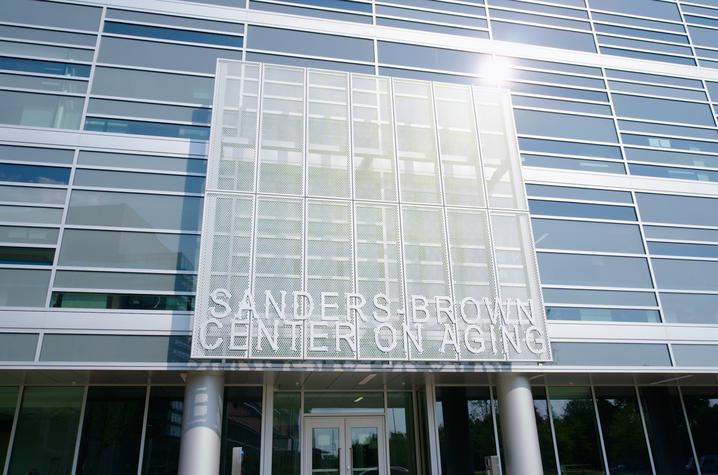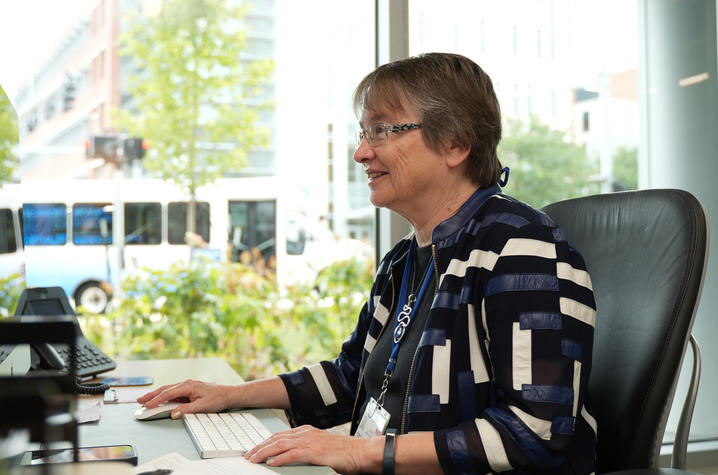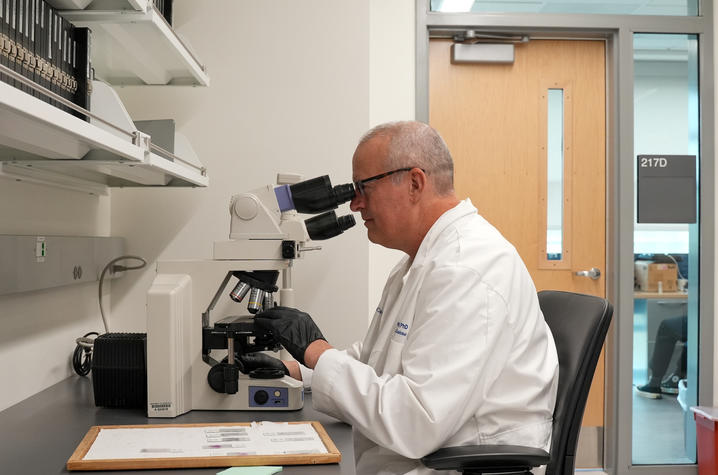UK Sanders-Brown Center on Aging celebrates reopening of renovated research facilities
LEXINGTON, Ky. (July 23, 2025) — The University of Kentucky Sanders-Brown Center on Aging hosted a ribbon-cutting ceremony to celebrate the grand reopening of its newly renovated research facilities, marking a major milestone in the center’s decades-long mission to advance brain health and aging research. The $28 million renovation project, made possible thanks to funding from the Kentucky General Assembly, was completed earlier this month and modernized three floors of research space within the Sanders-Brown building located on UK’s campus next to the Kentucky Clinic.
“These upgrades are more than bricks and mortar — they represent an investment by the University and by state legislators in the people and ideas that make Sanders-Brown a global leader in the science of aging,” said Sanders-Brown Center Director Linda Van Eldik. “Our internationally renowned researchers now have modern, purpose-built spaces that match the excellence of the work taking place inside them — spaces that support innovation, discovery and real impact on the lives of people facing neurodegenerative diseases.”
The first floor of the renovated space houses meeting areas and offices for the Administrative Core, including two new conference rooms. The second floor features wet lab space dedicated to the Neuropathology and Biomarker Cores. The third floor is home to the Outreach, Recruitment and Engagement Core, the Data Management and Statistical Core, and research programs focused on Down syndrome and aging.
The renovations were designed to support the center’s continued role as an international leader in research on Alzheimer’s disease and other age-related neurodegenerative conditions. The improvements also come at a significant moment in the center’s history: this year, Sanders-Brown celebrates its 40th anniversary as one of the country’s first 10 NIH-designated Alzheimer’s Disease Research Centers (ADRCs). UK’s center has held continuous funding from the National Institute on Aging since 1985 and remains one of just 36 designated ADRCs in the U.S. today.
“The work happening at Sanders-Brown touches lives not only here in Kentucky but across the country and around the world,” said Ilhem Messaoudi, Ph.D., UK acting vice president for research. “These enhanced facilities will ensure that our researchers remain at the forefront of discovery for years to come.”
Since its inception, Sanders-Brown researchers have contributed significantly to understanding the biological processes underlying Alzheimer’s. Early studies from the center helped characterize the roles of amyloid plaques and tau tangles in disease progression, forming the foundation for much of today’s research. Additionally, Sanders-Brown has been instrumental in identifying how genetic risk factors, such as the APOE ε4 allele, contribute to an individual’s susceptibility to developing the disease.
One of the center’s most significant contributions has been its research on early detection. Researchers at Sanders-Brown have developed innovative diagnostic tools, including advanced brain imaging techniques and biomarker studies, to identify Alzheimer’s disease at its earliest stages — often before symptoms even appear. These efforts have helped pave the way for earlier interventions and more effective treatment strategies.
Pete Nelson, M.D., Ph.D., is a professor of pathology and laboratory medicine in the UK College of Medicine and serves as director of neuropathology at Sanders-Brown. Research from Nelson's lab and others at UK helped discover a new form of dementia known as LATE, a form of dementia that mimics Alzheimer’s disease and affects around a third of elderly people. His team’s work was then translated into the world’s first clinical trial to slow or completely prevent the development of LATE — hosted at UK by Greg Jicha, M.D., Ph.D., director of clinical trials at Sanders-Brown.
“I came to UK around 20 years ago intent on doing best-in-the-world dementia research,” Nelson said. “In my time here, I am proud to have been part of ground-breaking, world-leading discoveries. Our clinical trials are made possible by what we do right here in this building — pitting science against dementia. Our ultimate goal is to help people not only survive into their golden years, but to enjoy those years.”
Housed in the UK College of Medicine, the Sanders-Brown Center on Aging also provides a robust training ground for the next generation of health care providers and researchers who are interested in studying, treating and preventing dementia. The center has training opportunities for people of all levels, from high school students to junior faculty. In 2017, the center was awarded a prestigious training grant from the National Institutes of Health to help train predoctoral graduate students and postdoctoral students.
“Think of the momentum Sanders-Brown has built, and the possibilities ahead because of this renovated facility,” said Chipper Griffith, M.D., dean of the UK College of Medicine. “It will draw future health care leaders to our campus to train here and work here, it will spark innovation and discovery, and it expands our capabilities to find solutions for patients and their families. Aligned with the UK College of Medicine mission, it helps us serve our communities more effectively so we can advance Kentucky together.”
The lab transformation was made possible with support from university leadership, Sanders-Brown's philanthropy council, Omni Architects, Whiting-Turner Construction, CMTA Engineering Consultants, and various departments at UK including Capital Projects Management, Facilities Management and Information Technology.
As the state’s flagship, land-grant institution, the University of Kentucky exists to advance the Commonwealth. We do that by preparing the next generation of leaders — placing students at the heart of everything we do — and transforming the lives of Kentuckians through education, research and creative work, service and health care. We pride ourselves on being a catalyst for breakthroughs and a force for healing, a place where ingenuity unfolds. It's all made possible by our people — visionaries, disruptors and pioneers — who make up 200 academic programs, a $476.5 million research and development enterprise and a world-class medical center, all on one campus.












